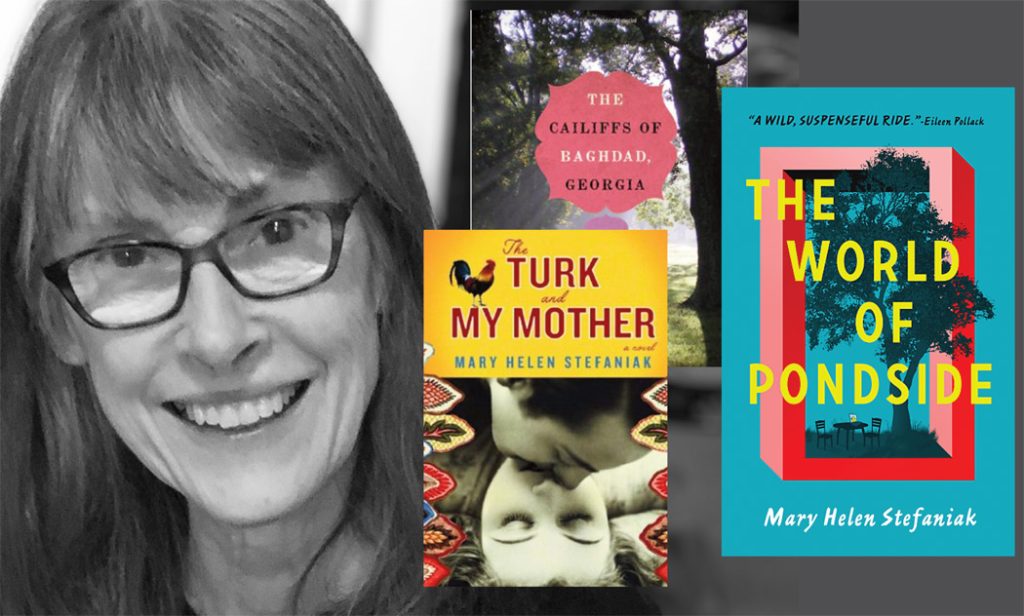
Mary Helen Stefaniak’s new novel is a delight.
That’s a sentence I easily could have written for each of Stefaniak’s three novels—The Turk and My Mother (2004), The Cailiffs of Baghdad, Georgia (2010), and her brand-new offering, The World of Pondside. (Stefaniak’s debut was 1997’s short story collection Self Storage and Other Stories.)
Stefaniak is a sharp-eyed observer of humanity who spins propulsive yarns about characters who are complex, quirky, and wholly relatable.
The World of Pondside
Let’s start with the new novel by the graduate of the Iowa Writers’ Workshop and longtime columnist for The Iowa Source.
Set in a nursing home, The World of Pondside opens with the discovery of the deaths of two residents. One of those residents created a game that both residents and staff play obsessively in an effort to imagine their way into different versions of their lives. But when the creator dies, the game goes dead as well. Stefaniak’s characters are eager to both solve the mystery of the deaths and find a way back into their virtual world.
The novel is frequently funny, sometimes grim, and endlessly readable. The mystery at its center is intriguing, but it is really the characters who carry the reader along as their hopes, disappointments, relationships, and grievances are craftily revealed as the story unfurls.
You should absolutely add The World of Pondside to your TBR pile, but I wouldn’t stop there. Stefaniak’s earlier novels are equally worth your attention.
The Turk and My Mother
The Turk and My Mother is made up of three distinct but interwoven tales: the story of Agnes and her separation from her husband Josef when he immigrates to America just before WWI; the story of Marko, Josef’s brother, who is presumed killed during the war but instead finds himself in a romantic entanglement in Siberia; and the story of Agnes and Josef’s son, George, and his first love. The family tales are told in layers, with one character recounting the storytelling of another, who might recount the storytelling of yet another character, giving the novel a compelling depth as the reader follows the sometimes twisting path through the narrative.
Along that path is the story of the Turk, a man with whom Agnes has a relationship while her husband is away and out of touch in America. Stefaniak creates a touching, if offbeat, courtship of sorts for Agnes and her Turk.
The Cailiffs of Baghdad, Georgia
The Cailiffs of Baghdad, Georgia is set in the late 1930s and related by Gladys Cailiff, herself a young girl at the time of tale’s events. The book has as its fulcrum the unconventional educator Grace Spivey. The Thousand Nights and a Night (perhaps more colloquially known as The Arabian Nights) is a centerpiece of Miss Spivey’s educational approach in the one-room schoolhouse over which she presides. She captivates her students—and eventually the entire town of Threestep, Georgia—with images, items, and ideas from Iraq. Meanwhile, she herself is captivated, though in very different ways, by two of the town’s young men: Theo Boykin, an African American who is probably Threestep’s most brilliant resident, and Force Cailiff, the exceptionally handsome older brother of Gladys. Her connections to both eventually prove dangerous.
Along the way, it becomes clear that there are surprising ties between the American South and faraway Baghdad of which few (both in the fictional world of the book and in the real world) are aware.
Each of Stefaniak’s novels is a stand-alone endeavor, so it doesn’t much matter in what order you read them. But read them you should.
